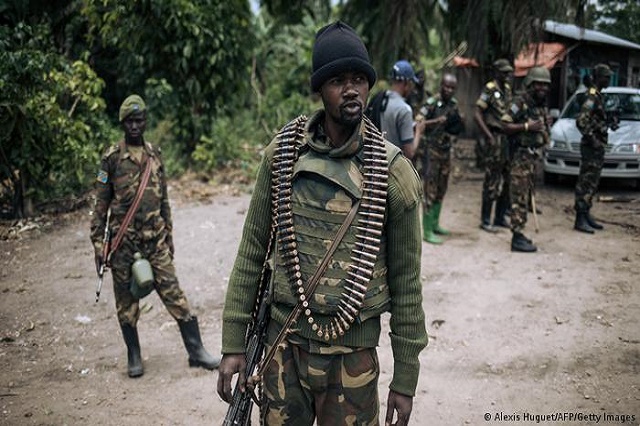Kinshasa – Democratic Republic of Congo’s most notorious armed group is moving inland from the border with Uganda after Ugandan and Congolese troops attacked its strongholds there, experts say.
Billed by the so-called Islamic State as its local affiliate, the Allied Democratic Forces (ADF) have been accused of killing thousands of civilians in DRC’s troubled east.
After the ADF carried out a wave of bombings in the Ugandan capital Kampala last year, Ugandan forces last November crossed the border in a joint crackdown with the hard-pressed Congolese army.
The operation has combined with a “state of siege” imposed last May in the eastern provinces of North Kivu and Ituri, giving special powers to army and police officers.
But the big effort has so far failed to stem ADF attacks and some observers say the group has merely been displaced.
ALSO READ |‘Traumatised’: DRC train crash survivors recount horror
At least seventy-nine civilians were killed in attacks from last Friday to Monday in the Beni and Irumu areas alone, local sources say.
Analysts following the security crisis in eastern Democratic Republic of Congo say the ADF has pulled out of strongholds near the border and headed farther inland.
Over the past three months, “there has been a movement of ADF rebels from east to the west,” crossing a line roughly marked by National Highway 4 linking Beni and Kisangani, said Reagan Miviri of the Kivu Security Tracker (KST), a respected monitor.
“The ADF threat has moved away from Uganda,” said lawyer Omar Kavota, coordinator for the Congolese Study Centre for the Promotion of Peace, Democracy and Human Rights, known by its French acronym CEPADHO.
Long-standing threat
The ADF was historically a Ugandan rebel coalition whose biggest group comprised Muslims opposed to Ugandan President Yoweri Museveni.
But it established itself in eastern DRC in 1995, becoming the deadliest of scores of outlawed forces in the troubled region.
The Islamic State presents the ADF as its regional branch the Islamic State Central Africa Province, or ISCAP.
In March last year, the United States placed the ADF on its list of “terrorist groups” affiliated with IS jihadists.
The DRC’s Catholic Church says the ADF has killed around 6 000 civilians since 2013 while the KST has blamed it for more than 1 200 deaths in North Kivu’s Beni area alone since 2017.
ALSO READ |More than 50 killed in rebel attacks in DRC
Legislator Jean-Baptiste Muhindo Kasekwa, an MP for North Kivu’s provincial capital Goma, this week challenged the government to explain “the real causes of the stalemate in the security situation.”
Since the start of the “state of siege,” 2 068 civilians have died, while the tally since the start of the offensive is 383 dead, he told AFP.
Muhindo Kasekwa said he feared that the joint offensive had served only to “steer the ADF away from the Ugandan border and push them further into the DRC”.
Displaced rebels
The same thing happened in 2009, he said.
A crackdown against the Democratic Forces for the Liberation of Rwanda (FDLR) an ethnic Rwandan Hutu group active in eastern DRC simply caused the rebels to move away from the Rwandan border, he said.
Miviri said it was unclear whether the ADF’s move away from its normal strongholds was temporary or permanent.
“But everything suggests that if the Ugandan offensives increase, the ADF will go further towards the regions of Mambasa and Epulu,” he said.
The military authorities in North Kivu and Ituri are constantly calling on local people to work with and trust the armed forces.
But “if we continue at this rate, the number of dead will be higher” than before, with the risk that the public loses faith, Miviri warned.
Follow African Insider on Facebook, Twitter and Instagram
Source: AFP
Picture: Twitter / @danielmarven
For more African news, visit Africaninsider.com


